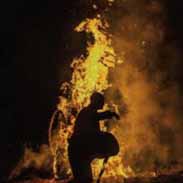Respiratory Distress Syndrome Flashcards, test questions and answers
Discover flashcards, test exam answers, and assignments to help you learn more about Respiratory Distress Syndrome and other subjects. Don’t miss the chance to use them for more effective college education. Use our database of questions and answers on Respiratory Distress Syndrome and get quick solutions for your test.
What is Respiratory Distress Syndrome?
Respiratory Distress Syndrome (RDS) is a common condition that affects infants, primarily those born prematurely. It occurs when the lungs are unable to produce enough surfactant, a substance that helps keep the air sacs in the lungs open so air can be exchanged. Without enough surfactant, the air sacs can collapse and result in labored breathing and oxygen deprivation. RDS is a serious medical issue that can lead to death if not treated promptly and appropriately. The primary cause of RDS is premature birth; this means that any baby born before 37 weeks of gestation may be at risk for developing it. Other risk factors include maternal smoking during pregnancy, multiple births, low birth weight or gestational age, maternal diabetes or preeclampsia during pregnancy, genetic disorders such as Down syndrome or cystic fibrosis, infections in utero such as chorioamnionitis or intrauterine growth restriction due to placental insufficiency.The signs and symptoms of RDS include rapid shallow breathing, nasal flaring while breathing in, grunting noises while exhaling and retractions (when the muscles between ribs pull inward with each breath). Other signs may include difficulty feeding or tiring quickly after feeding due to lack of oxygenation; cyanosis (a bluish hue on skin due to poor oxygenation); poor muscle tone; apnea (periods where breathing stops); high heart rate; low blood pressure; reduced urine output; and low body temperature. Treatment for RDS typically includes supplemental oxygen therapy through an oxygen hood or nasal cannula as well as medications such as caffeine citrate which helps stimulate respiration. If these treatments do not improve symptoms then mechanical ventilation with positive pressure may be necessary to help keep airways open and ensure adequate oxygenation via intubation. Additional therapies such as chest physiotherapy may also be used to help loosen secretions from their lungs allowing them more easily remove secretions via coughing/suctioning techniques. In some cases extracorporeal membrane oxygenation (ECMO) therapy may also be used when other treatments have failed but this requires specialized medical equipment only available at certain medical centers so it is not commonly used for treating mild-moderate cases of respiratory distress syndrome.








